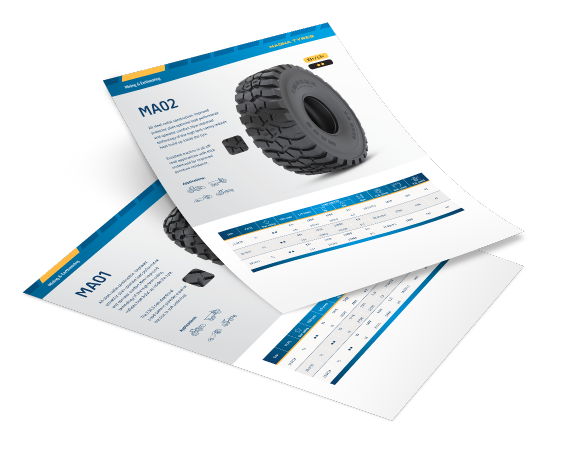Reasons Leading to Significant Tire Wear
Reasons Leading to Significant Tire Wear
Tire wear is a common concern, often leading to frustration when tires wear out prematurely. Maximizing your tire’s lifespan is crucial to ensure you get the best value for your investment. But how can you prevent early tire wear?
Several factors can significantly influence the lifespan and performance of your tires. Based on wear patterns, here are the most common causes of extensive tire wear:
Common Causes of Tire Wear
1. Underinflated Tires
When tires lack sufficient air pressure for extended periods, both shoulders of the tire wear out due to uneven pressure on the tread. The sidewalls bear excessive strain, leading to increased rolling resistance, overheating, and irregular wear patterns. Ensuring the correct tire pressure can prevent this issue.
2. Overinflated Tires
Conversely, too much pressure over time causes the central tread to wear faster, disrupting overall tire balance. This reduces traction, creates a rougher ride, and leads to uneven wear. Maintaining the proper tire pressure is essential to avoid these problems.
3. Incorrect Wheel Position
Incorrect wheel positioning can cause irregular tread wear by disrupting the tire’s intended direction. Additionally, improper wheel alignment can cause uneven tire wear, detectable by hand. Realignment ensures even weight distribution across tires, enhancing their lifespan. Also, make sure that the wheel is in the correct position.
4. Incorrect Tire Size
Using the wrong tire size for your vehicle can lead to premature wear. Ensure your tire size matches the vehicle specifications to prevent potential damage and premature wear.
5. Bead Damage
The tire bead ensures proper connection between the tire and wheel without air escaping. Any bead damage requires immediate replacement for safety. Damaged or corroded beads compromise the seal, leading to air leaks, uneven wear, and safety hazards. This often results from improper mounting adjustments.
6. Bad Shock Absorbers
Imbalances in the wheel, gaps in suspension rubbers, or deformed tire lugs can damage shock absorbers, preventing them from functioning correctly. Worn-out shock absorbers can lead to increased tire wear and excessive bouncing by failing to dampen road impacts effectively.
7. Sidewall Wear
Sharp edges and run-up can cause sidewall wear. Damage from such edges is easy to identify and generally not dangerous unless it reaches the carcass threads, necessitating new tires. Ensure the tire is appropriately sized and positioned correctly to avoid sidewall damage.
8. Cutting Tooth Wear
Aggressive driving or rough terrains can cause cutting tooth wear, leading to premature damage and reduced traction. This type of wear, occurring on non-driven axles, often results from low pressure and poor tracking. You can see this wear around the tire contour and across the width of the tread. Regularly inspect your tires and consider adjusting your driving style or wheel position.
Reducing Tire Wear
Understanding these common reasons for tire wear is key to taking proactive measures. Regular inspections, proper maintenance, and following manufacturer recommendations can significantly reduce premature tire wear, ensuring a longer lifespan and safer driving experiences. For any questions, feel free to contact us.


